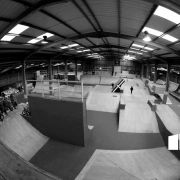Until nearby Redruth adopted the title, St Day was the centre of mining in mid-Cornwall and evidence of this can still be found in the numerous terraces of granite cottages dotted around the area and built to accommodate the growing numbers of miners at the time. Interestingly, mining in this area didn't spawn a large industrial town typical of other parts of Britain, but many large villages like St Day and its neighbours Chacewater and Carharrack.
Originally, the mining industry here revolved around the extraction of tin in the 1500 and 1600s, but latterly in the 18th century it was copper seams in the area which were being exploited, with the area reaching maximum production in the early 1800s. At the time this area with its many mines was referred to as the 'richest square mile to be found anywhere on earth'. As well as houses both large and small, this boom time occasioned the building of many shops and services, some of which can still be seen in the village today. The hustle and bustle of a thriving village has now very much quietened since the industry died out. Nowadays, and it is more the rich historical value of its outlying area that is of interest.
In a neighbouring hamlet of Busveal is the famous Gwennap Pit. This deep, and now terraced, natural indentation in the ground became an amphitheatre around the time of the 'Copper Kingdom' in 1762 for Methodist preaching. John Wesley famously spoke here many times to thousands of gathered "Methodys" and it still represents something of a Mecca amongst believers today.
Although the village certainly shows the signs of a boom town which has declined, a certain nostalgic something still exists. It is named after the not very well-known Saint Day or Dye (better known in Brittany) though the granite, gothic style church is dedicated to the Holy Trinity and was built in 1828. Before this time, a chapel of the same name had existed in St Day since the 13th century. Nowadays, the church is a local community centre containing a local history exhibition.
The town clock in the main square was built in 1831 and was used in yesteryear for locking up the drunk and unruly. This was also the site of the village's stocks in the 1800s. The local pub on Fore Street is the St Day Inn.






